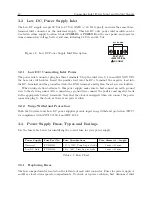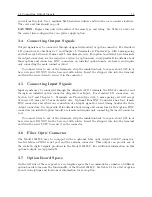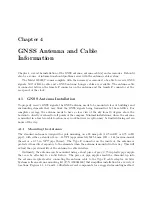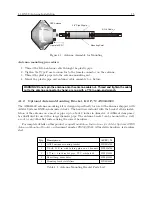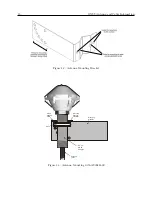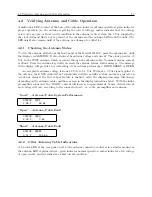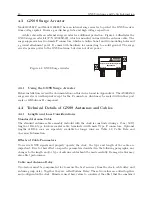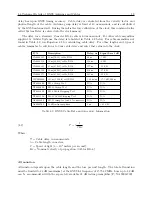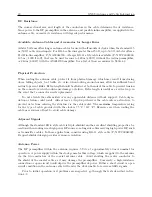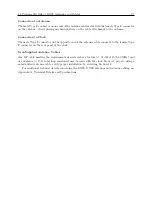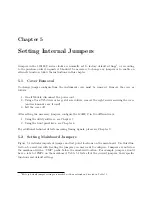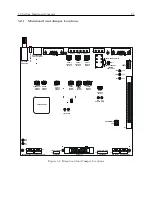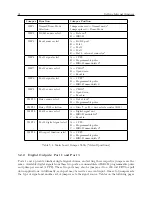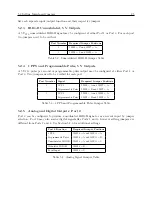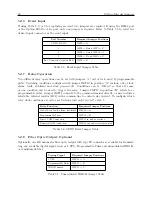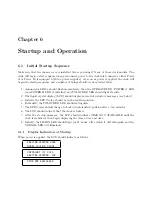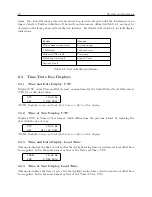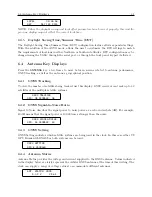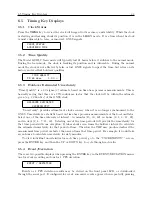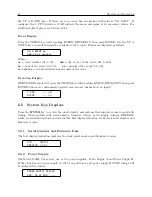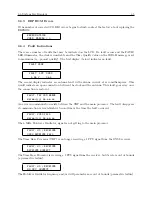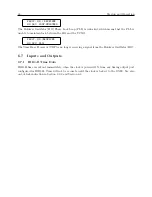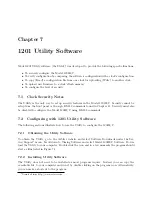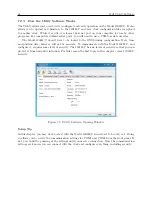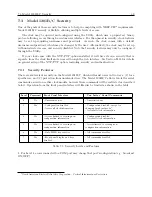
26
Setting Internal Jumpers
5.2.6
Event Input
If using Ports 1, 2, or 3 for capturing an event, two jumpers are required. If using the RS232 port
or the Option E09
Event In
port, only one jumper is required. Refer to Table 5.5 to select the
desired input connector as the event input.
Port Number
Required Jumper Positions
COM 1 RS-232
JMP4 = A
1
JMP4 = B and JMP7 = C
2
JMP4 = C and JMP12 = C
3
JMP4 = D and JMP9 = C
Ext. Connector (Option E09)
JMP4 = E
Table 5.5: Event Input Jumper Table
5.2.7
Relay Operation
Two different relay operations can be set with jumpers: (1) out of lock, and (2) programmable
pulse. Switching conditions configured with jumper JMP10 in position “A” include, out of lock,
alarm, fault, stabilized and clock powered off.
Conditions can be “OR’ed” so that all, some,
or one condition can be used to trigger the relay. Jumper JMP10 in position “B” selects for a
programmable pulse. Jumper JMP11 connects to the common terminal directly, or may include a
selectable, internal resistor (R24) in the common line to control relay current. To configure which
relay clock conditions are active see Sections (new entry in ch.7) and 8.5.
Relay Function
Required Jumper Positions
Out of Lock, fault, alarm, stabilized
JMP10 = A
Programmable Pulse
JMP10 = B
Direct COM Connection
JMP11 in and no resistor
Resistive COM connection
JMP11 out and resistor mounted
Table 5.6: SPDT Relay Jumper Table
5.2.8
Fiber Optic Output: Optional
Optionally, one 820 nanometer fiber optic output with type ST connector is available for transmit-
ting any available digital signal, such as 1 PPS, Programmable Pulse and unmodulated IRIG-B,
over multimode fiber.
Timing Signal
Required Jumper Positions
1 PPS
JMP13 = A
Programmable Pulse
JMP13 = B
IRIG-B unmod.
JMP13 = C
Table 5.7: Unmodulated IRIG-B Jumper Table
Summary of Contents for 1201B
Page 4: ...iv ...
Page 153: ...B 7 Four Fiber Optic Outputs 135 Figure B 4 Jumper Locations ...

